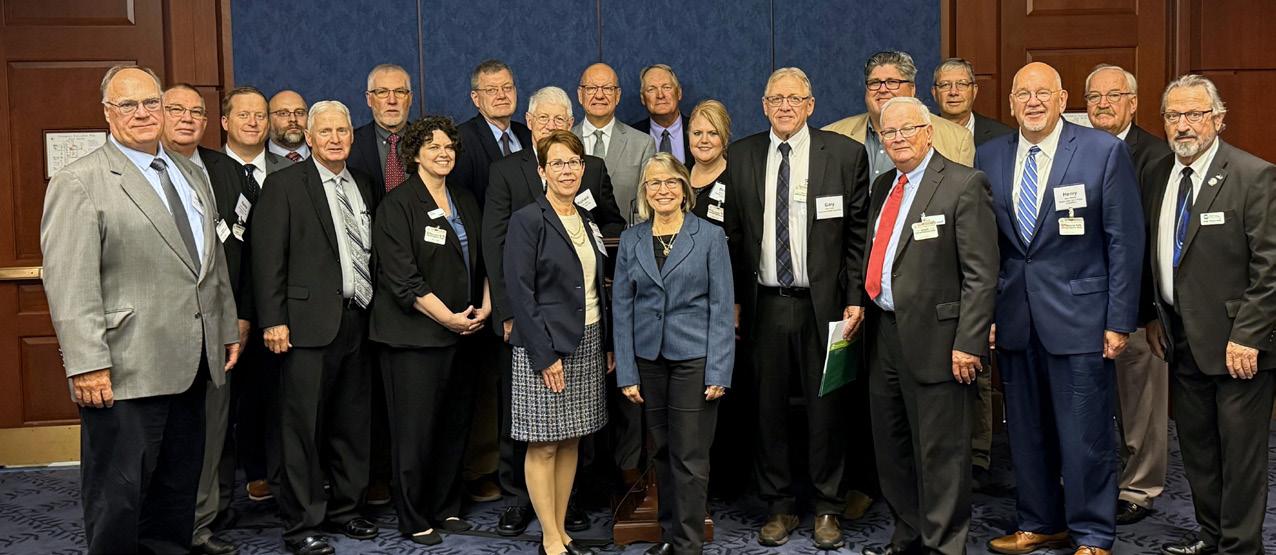

Advocacy in action:
Iowa electric co-ops discuss priorities with legislators in D.C. WattsWatt WattsWatt
As part of our cooperative commitment to advocacy, Iowa’s electric cooperatives regularly coordinate meetings with state and federal legislators through the Iowa Association of Electric Cooperatives. The week of September 23, approximately 20 electric coop representatives traveled to Washington, D.C., to talk with federal legislators.
“Going to our nation’s capital is a valuable opportunity for our Iowa Rural Power grassroots efforts to shine. Iowa’s electric cooperatives care deeply about the memberowners and communities we serve and it’s important to meet with elected officials to discuss issues that affect our ability to provide reliable and affordable power,” said Ryan Cornelius, vice president, corporate relations, Corn Belt Power Cooperative.
Iowa electric co-op advocates met with every member of the Iowa Congressional Delegation, including Senator Ernst, Congressman Feenstra, Senator Grassley, Congresswoman Hinson, Congresswoman Miller-Meeks and Congressman Nunn. Specifically, co-op representatives expressed concerns about recent cuts to the USDA’s Rural Economic Development Loan
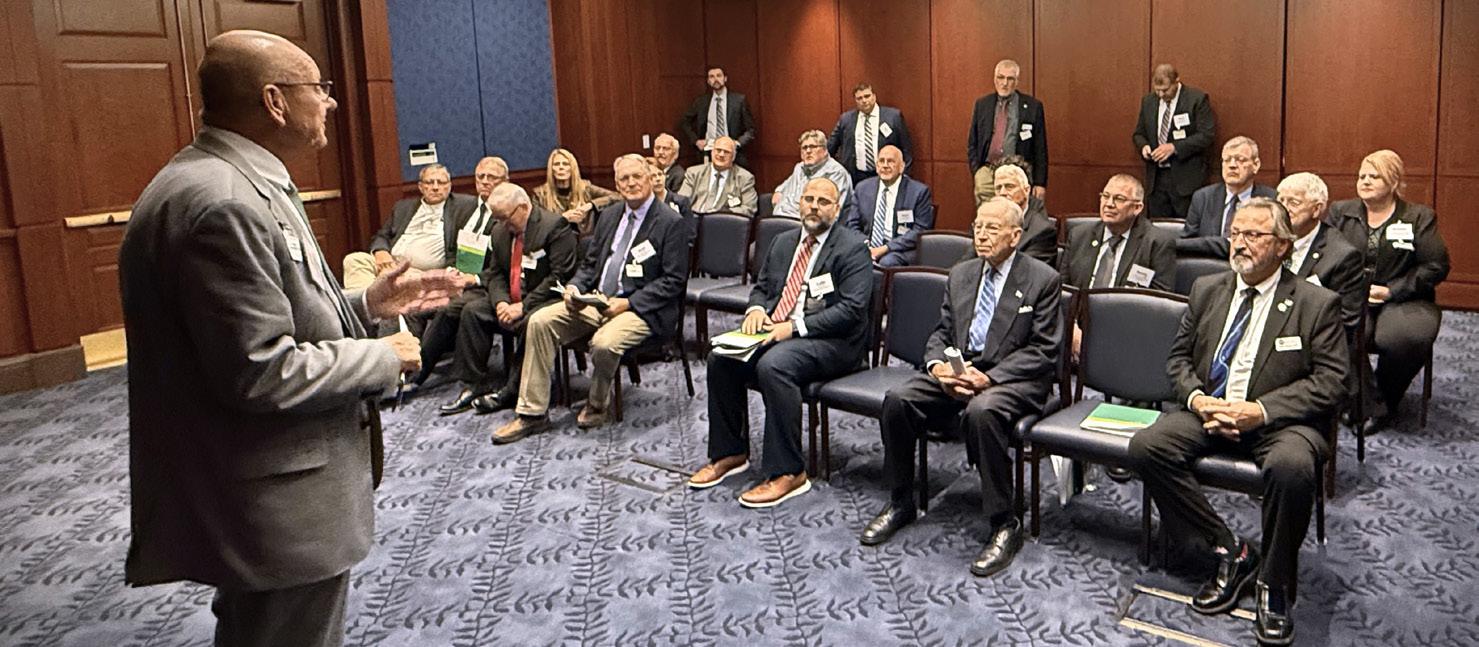
Advocating for Iowa’s electric co-ops
& Grant program. Through REDLG, USDA provides grant funds to local utility organizations, often including local electric cooperatives, which use the funding to establish revolving loan funds. Loans are made from the revolving loan funds to local businesses and projects that will create or retain rural jobs. Iowa co-op advocates urged the Iowa Congressional Delegation to support the House version of the REDLG
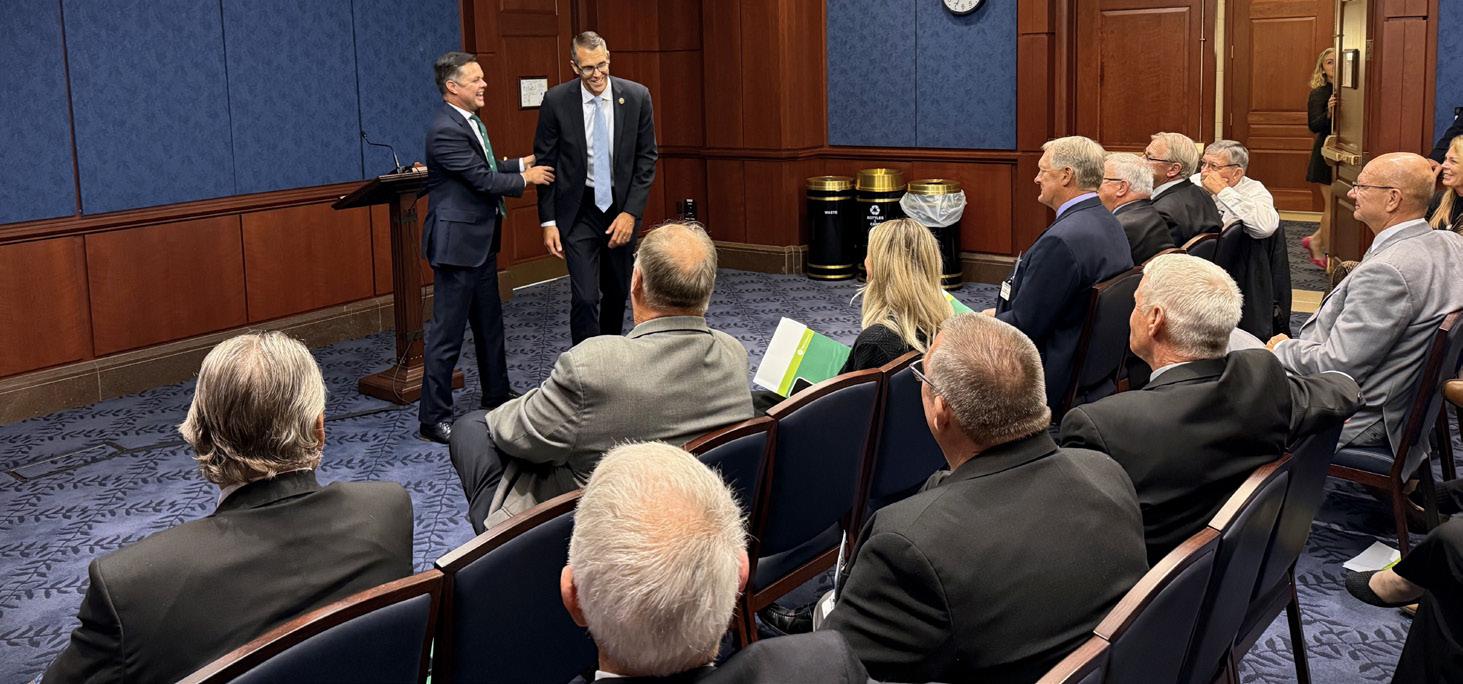
address co-op advocates
markups, which partially restore REDLG funding for FY25, with intentions to return to optimal REDLG funding levels in FY26.
During the legislative visits, Iowa electric co-op advocates also highlighted continued threats to the reliability and affordability of power in the wake of the Environmental Protection Agency’s recent mandates on power plants. America’s electric cooperatives oppose the EPA’s power plant rules on the grounds that they are unlawful, unrealistic and unachievable.
Additionally, IAEC coordinated briefings from the National Council of Farmer Cooperatives, the USDA and CoBank to learn more about emerging trends and issues impacting Iowa co-op members.
We appreciate the service of Iowa’s elected officials and the tireless work of their staff who help look out for Iowans in the Halls of Congress. The next planned trip for Iowa Rural Power advocates will come in the spring of 2025. Learn more about Iowa Rural Power grassroots advocacy at IARuralPower.org
Above | Jim Gossett, left, CEO, Raccoon Valley Electric Cooperative, shares Iowa's electric cooperative priorities with Senator Grassley, front row, second from right, in Washington, D.C. Sept. 23.
Above | Congressmen Zach Nunn, left, and Randy Feenstra visit with the Iowa Electric Cooperative delegation in Washington, D.C. Sept. 23.
What are generation and transmission electric cooperatives?
For more than 800 electric cooperatives across the country, the source for electricity is a different kind of cooperative. Referred to as “G&Ts,” these Generation & Transmission cooperatives –like Corn Belt Power Cooperative - exist to help electric co-ops serve their members as reliably and affordably as possible.
Across the nation, Corn Belt Power and 63 other G&T cooperatives provide access to wholesale (at-cost) power at a better price than each of their member co-ops could obtain on their own. Most G&Ts go beyond the delivery of power to provide sophisticated business resources that would normally be out of reach for local co-ops.
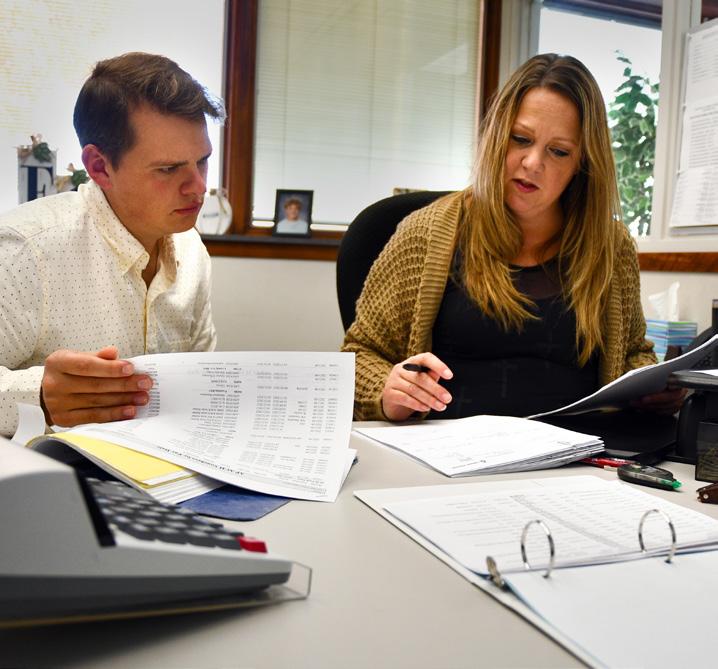
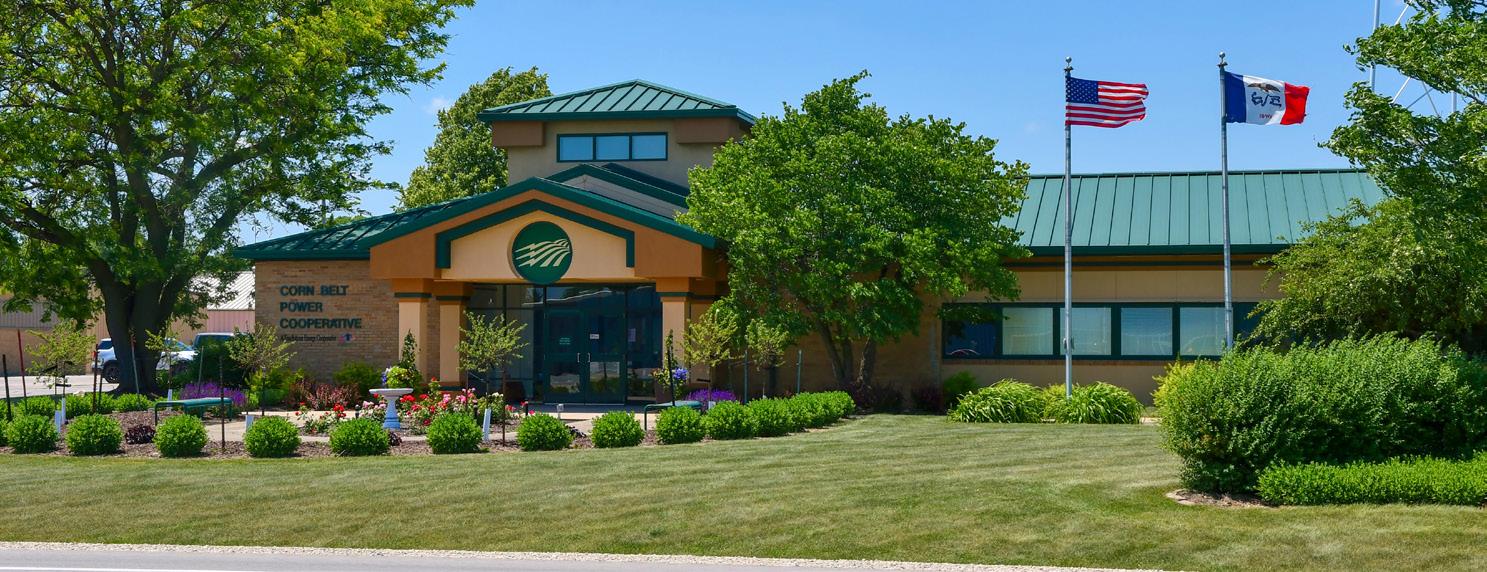
Most G&Ts maintain their own power plants, while others purchase power for their members on the wholesale market. Some G&Ts manage a combination of native power generation and purchases. Because a G&T buys enough power to supply all of its member co-ops, it has the bargaining power to secure significantly lower prices than those co-ops could negotiate by themselves. Regardless of how they’re structured, G&Ts help keep your electric bill smaller.
Just as important is the work G&Ts perform in planning. The nation’s energy landscape is changing rapidly. G&Ts constantly work with local co-op staff to study and forecast power needs. They consider how growing communities might affect the demand for electricity in the future and work closely with local co-ops when power reliability is challenged, such as times
when electricity demand outpaces supply or after a major weather event.
In addition to obtaining the electricity local co-ops need, G&Ts improve and maintain the reliability of the infrastructure co-ops and their communities depend upon. By working with local co-op staff to upgrade transmission lines and deploy substations, they make sure the power will be there for members like you when you need it. G&Ts also work closely with government agencies that monitor and manage the nation’s electric grid.
So, while your co-op may not own the power plant that generates the electricity you use every day, it’s part of an even bigger not-for-profit cooperative whose mission is to make your service even more reliable and affordable. As the power behind just like distribution electric co-ops, G&T cooperatives exist to serve you.
Like a local co-op, we are a not-for-profit organization that exist to serve the needs of their members. G&Ts generally serve all the co-ops in a specific geographic area.
G&Ts employ a leadership team of experts in data, finance, engineering, member service, economic development, power supply and other important specialties that are essential for electric co-ops. The G&T operates behind the scenes to support the local co-op’s teams, and although G&Ts may be largely unseen, they operate with complete transparency.
G&Ts are best known as the source for at-cost electricity that is generated elsewhere, then delivered to your local co-op over highvoltage transmission lines. Your co-op uses distribution power lines and transformers to then deliver that electricity to your home or business.
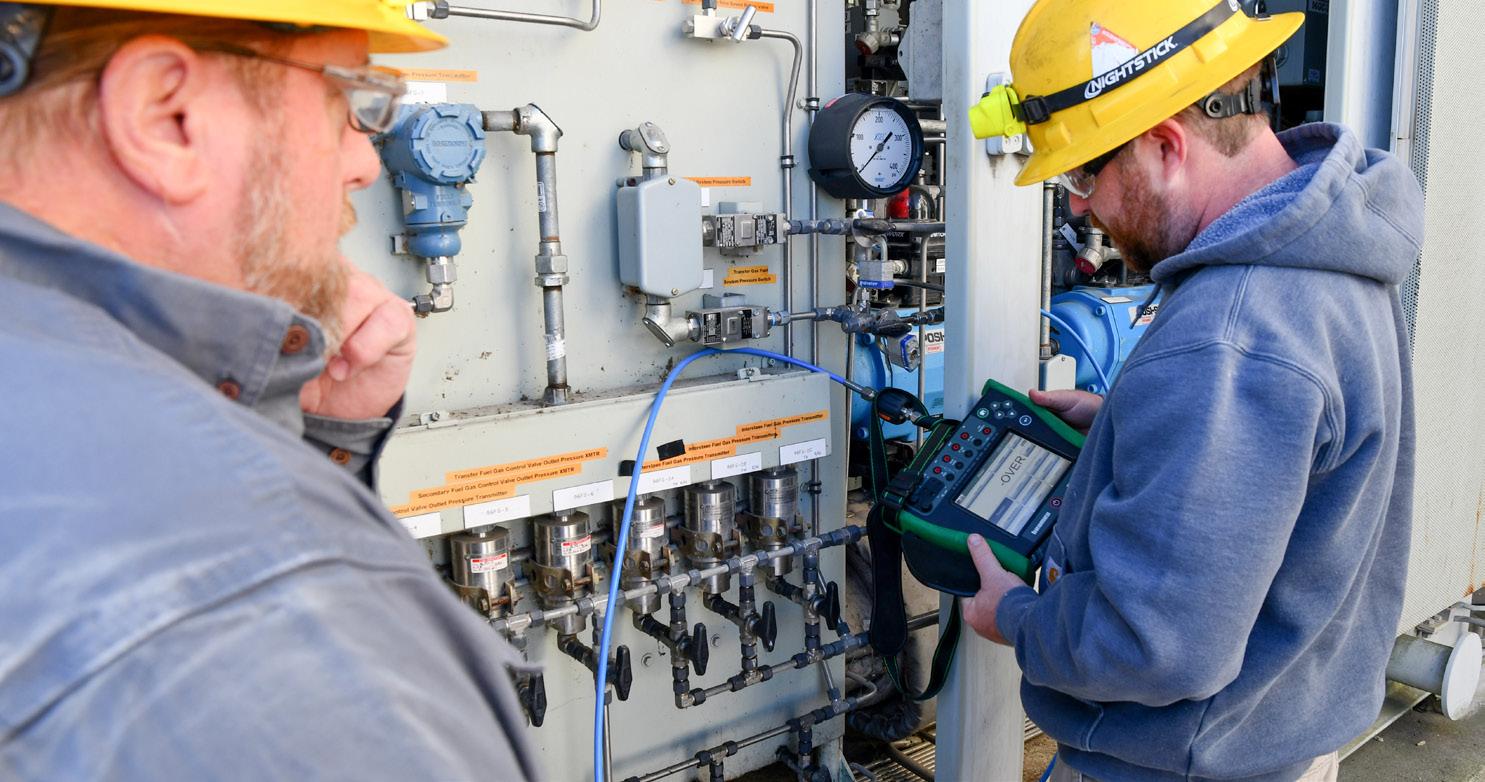
Wisdom
power plant workers
Above | John Naber, electrical/control, left, and Tyler Herrig, maintenance foreman, perform pressure switch calibrations on the Wisdom Unit 2 gas module as part of the preventative maintenance program.
Corn Belt Power Cooperative headquarters
Above | Sam Moore, accountant III, left, and Kari Rubel, accountant III, Corn Belt Power review cooperative invoicing. Accountants
As concerns about electric grid reliability continue to make headlines, Corn Belt Power Cooperative’s Wisdom Station in Spencer remains a key asset within the Southwest Power Pool network.
As of October 20, grid operators have called upon the plant 27 times, primarily to ensure system reliability.
“We’re seeing an increasing number of advisories from the SPP, mainly due to generation shortfalls,” said Mike Thatcher, vice president, power supply, Corn Belt Power. “Our team at Wisdom Station does an outstanding job maintaining the plant and ensuring it’s ready whenever we’re called upon.”
In October, both Unit 1 and Unit 2 underwent scheduled maintenance. Unit 2 was inspected using a borescope, while
Unit 1 required boiler tube and transformer repairs.
A borescope inspection involves using a small camera to examine internal components, allowing operators to check the compressor, turbine, and the generator’s end turns.
“These inspections help us identify potential issues early, before they escalate into larger problems or cause system failures,” explained Patrick Connor, plant manager, Corn Belt Power. “For example, minor repairs can often be made on-site to address small issues, like turbine blade damage. We also conduct dye penetrant and eddy current testing to detect cracks that may not be visible with the borescope alone.”
Unit 2 is expected to return to service ahead of Unit 1’s completed repairs.
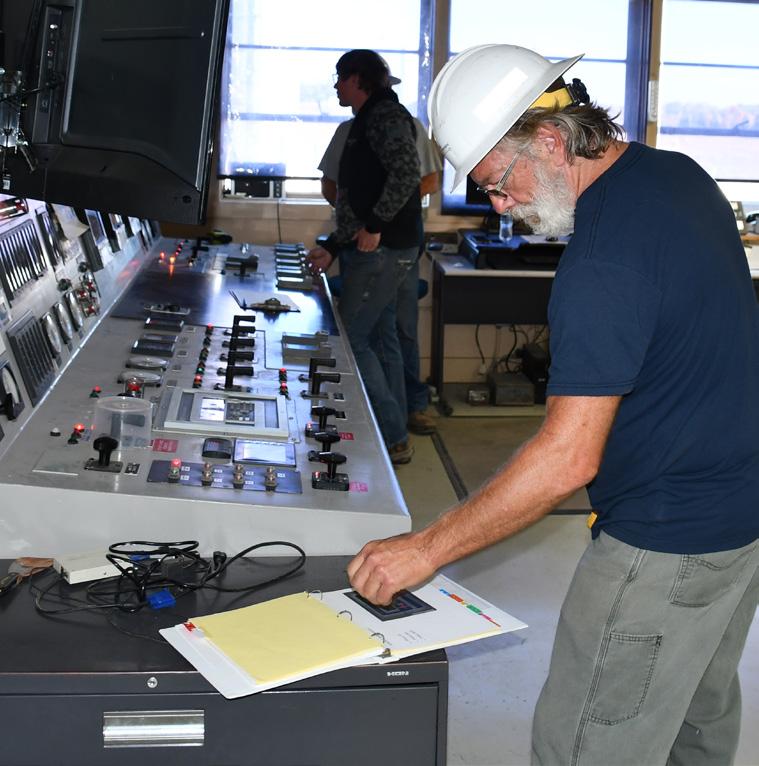
Above | Mike Cowell, shift operator, Corn Belt Power, operates Wisdom Unit I during an October runtime.
Iowa based electric cooperatives announce details for 2025 Momentum is Building Conference
Iowa builders and contractors are invited to explore the latest in energy efficiency technologies at the 2025 Momentum is Building Conference, set for February 20-21, 2025, at The Sheraton West Des Moines in West Des Moines, Iowa.
A key attraction for attendees is the opportunity to earn CEU (continuing education credits) in Iowa’s plumbing/ mechanical, HVAC, and electrical codes. Attendees will also have the chance to network with industry peers, learn from leading experts in energy efficiency and the building trades, and gain insights into current energy efficiency regulations and incentives.
Sponsored by the Iowa Cooperatives for Energy Efficiency (ICEE), the annual

Momentum is Building Conference links Iowa’s construction industry with the services and resources provided by local electric cooperatives, which serve nearly 650,000 Iowans across all 99 counties.
“Electric cooperatives have long supported energy efficiency, and one of our key goals is to help member-consumers use energy wisely,” says Angela Catton vice president of communications and development at Northwest Iowa Power Cooperative. “We invest in this conference to build relationships between cooperatives and the contractors who serve our members.”
“We’re excited to ‘return to our roots’ in 2025, bringing the conference back to the Sheraton and kicking it off by welcoming
back Bill McAnally, a longtime friend of the event and a respected expert in energy efficiency, as our Opening Keynote,” added Ryan Cornelius, vice president, corporate relations, Corn Belt Power Cooperative. “We are also welcoming back our fantastic CEU providers, Dave Sullivan (Electrical), Terry Moorman and Jeff Reichart (PMSB).
For over 30 years, the Momentum is Building Conference has created a platform for electric cooperatives and contractors to collaborate in providing rural Iowans with safe, efficient, and cost-effective home comfort solutions.
For more information or to register for the 2025 Momentum is Building, visit www. MomentumIsBuilding.com. Early bird registration runs until January 20, 2025.

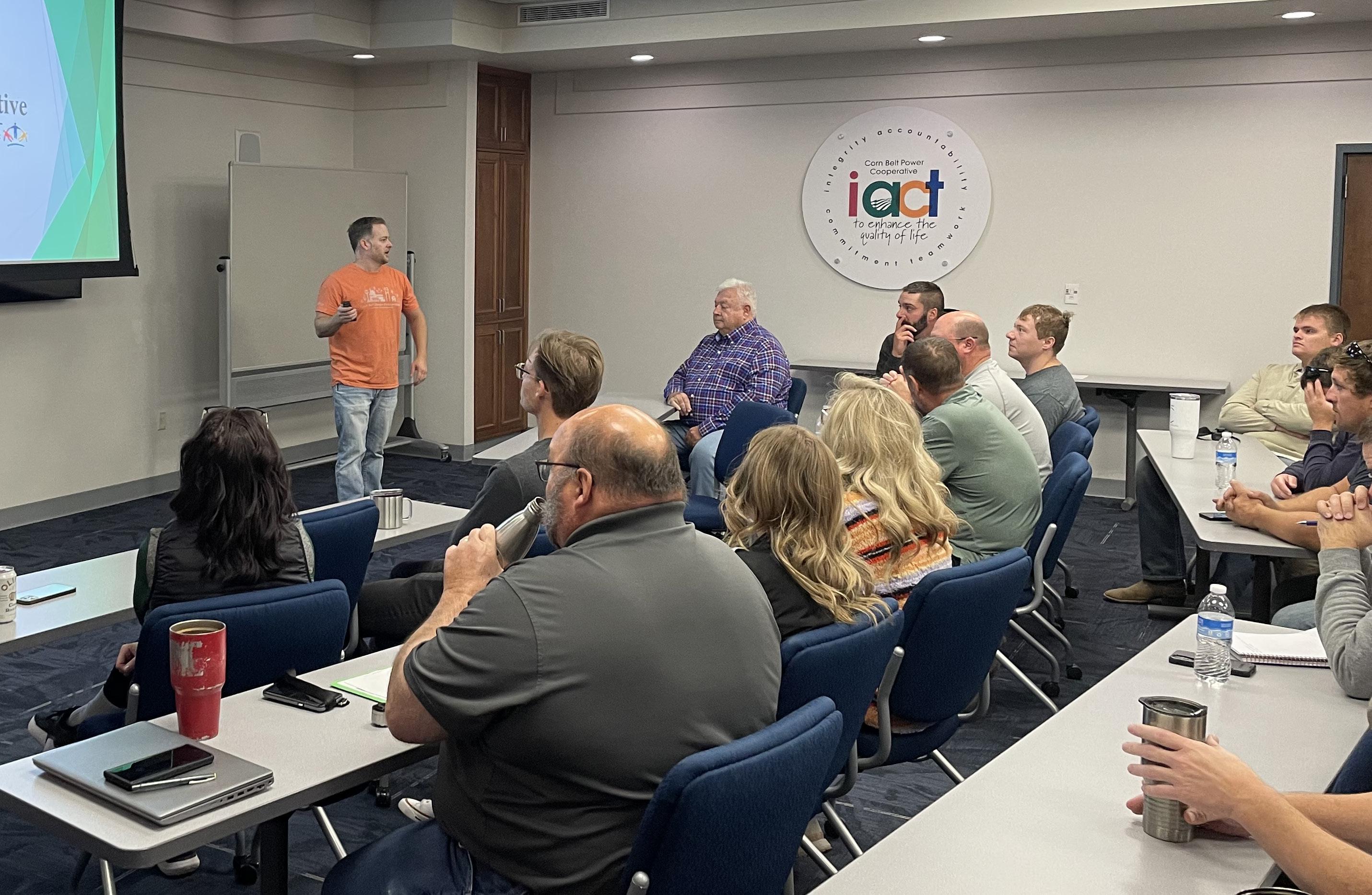
September
Touchstone Energy Volunteer Challenge winner | Kerri Mertz, executive assistant, Corn Belt Power Cooperative, donated her $100 prize to the Two Rivers Junior Pistol Club.
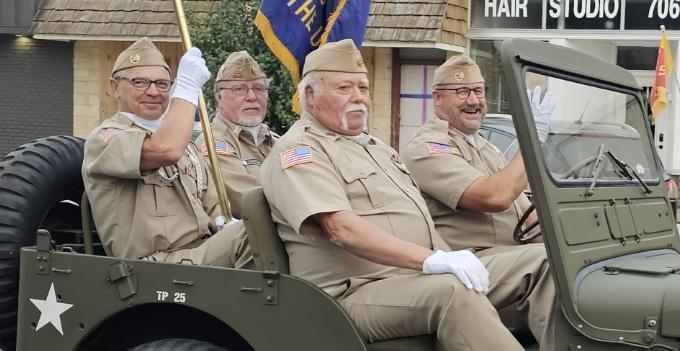

Jeremy Stattelman
The power of human connections
Jeremy Stattelman, Corn Belt Power Cooperative, driver, and Larry Beilke, Midland Power Cooperative, first from left, demonstrate commitment to community by volunteering for the Humboldt VFW Honor Guard. Stattelman served eight years in the Army National Guard, completing two tours to the Middle East. Beilke, a veteran of the Iowa National Guard, served 21 years total, with six of those years served as active Army with one completed tour in Iraq in 2008 and 2009. Beilke was also stationed in Germany for three years during his career.
Herrig promoted
Tyler Herrig has been promoted to a newly created position of maintenance foreman at Wisdom Station. Tyler has worked at Wisdom since 2011 as an electronics technician. He holds degrees in electrical technology from Northwest Iowa Community College and energy management from Bismarck State College. Congratulations Tyler!


